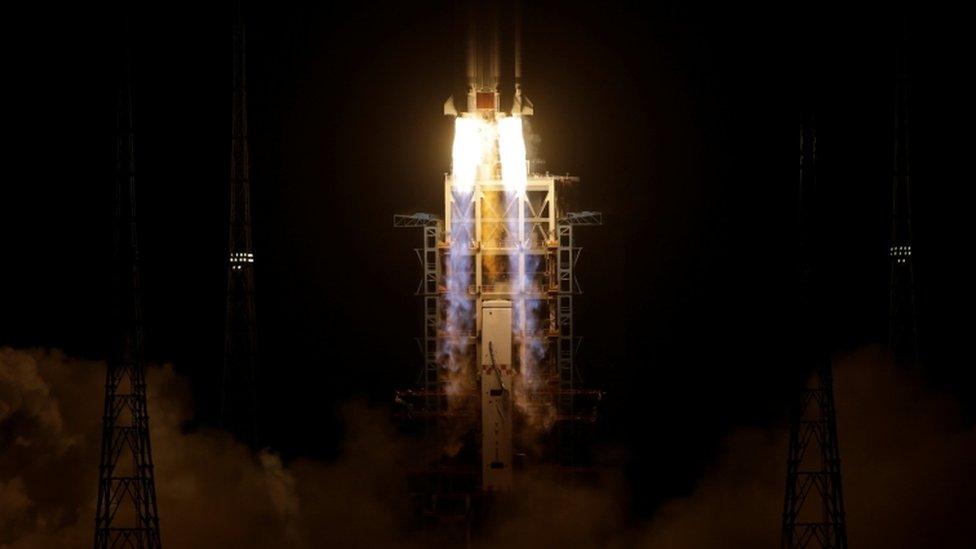Space: The Chinese Chang'e-5 spacecraft heading to the Moon!
- Published
- comments

The mission is expected to take around 23 days in total
China has successfully launched a robotic spacecraft tasked with bringing back samples from the Moon.
The Long March-5 rocket left from the Wenchang Space Launch Centre, based on the country's island of Hainan, on Tuesday morning, carrying the Chang'e-5 spacecraft.
It's been more than 40 years since any country has attempted to bring lunar materials from space back to Earth.
America and the Soviet Union are the only two countries to have successfully collected samples from the Moon since 1967 and China is aiming to be just the third country to do so.
It's hoped the samples will help scientists find out more about the Moon's origin and how it was formed.
The Chang'e-5 spacecraft is being carried by the Long March-5 rocket
So how exactly will the mission work?
Well, the process is a complex one involving lots of different steps.
The Chang'e-5 spacecraft is made up of four different parts - an orbiter, lander, ascender and re-entry capsule.
After entering the Moon's orbit, the spacecraft will fly around the giant mass before separating into two parts. The orbiter and re-entry capsule will remain in orbit while the lander and ascender will descend to the Moon's surface.
The entire mission is scheduled to take around 23 days according to the China National Space Administration (CNSA), with the Moon landing due to take place in roughly eight days.
The Chang'e-5 will be on the lunar surface for about two days.
We're seeing right now an extraordinary expansion in lunar activity.
Moon Landing: What are conditions like on the Moon?
Once on the Moon, the lander and ascender will use a special drill to get underground rocks from two metres beneath its surface and a mechanical arm will be used to gather surface dirt.
It's hoped around two kilograms of stones and soil will be collected and the samples will then be packed in a vacuum metal container inside the ascender before they are later returned to Earth.
Dr James Carpenter, who is the exploration science coordinator for human and robotic exploration at the European Space Agency says this shows just how interested in space the big nations are right now.
"We've got the US-led Artemis programme (to return astronauts to the Moon) and the partnerships around that; the Chinese with their very ambitious exploration programme; but also many more new actors as well."
- Published21 October 2020
- Published23 September 2020
- Published24 October 2020
